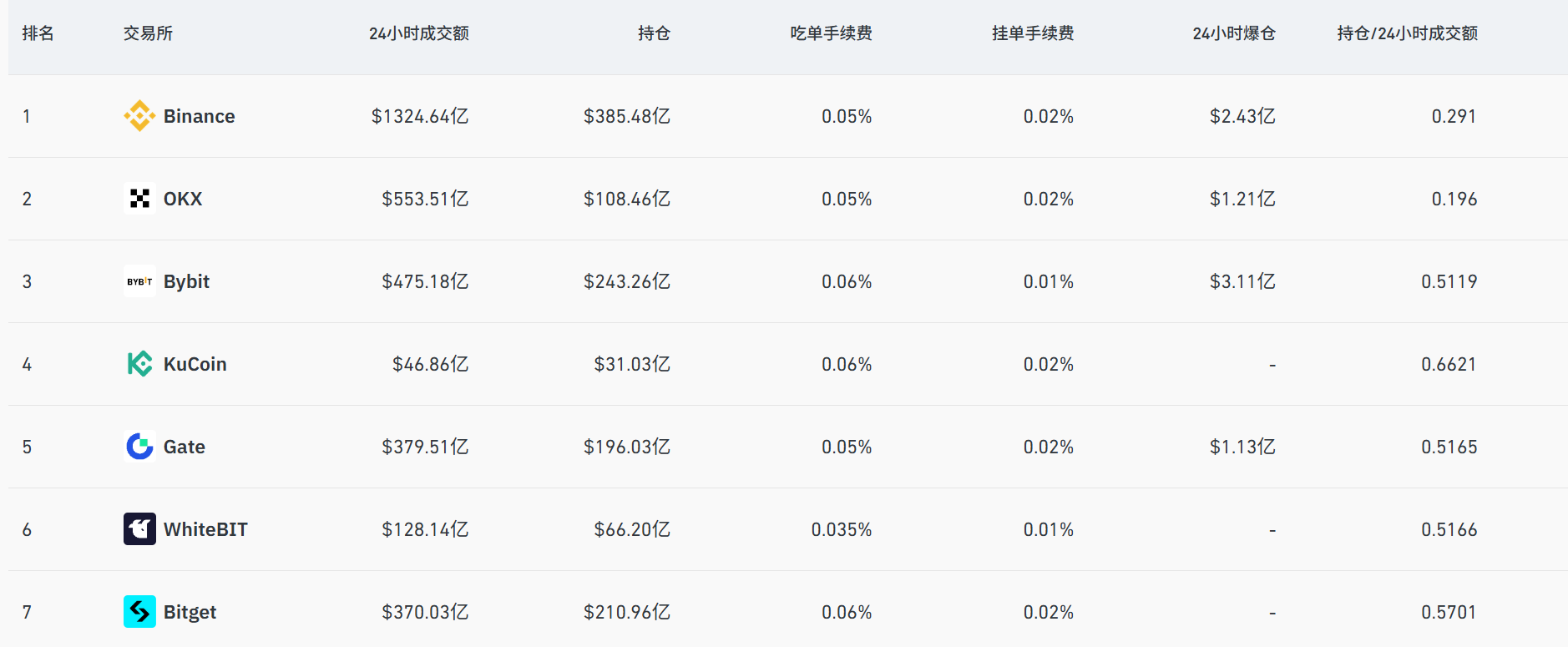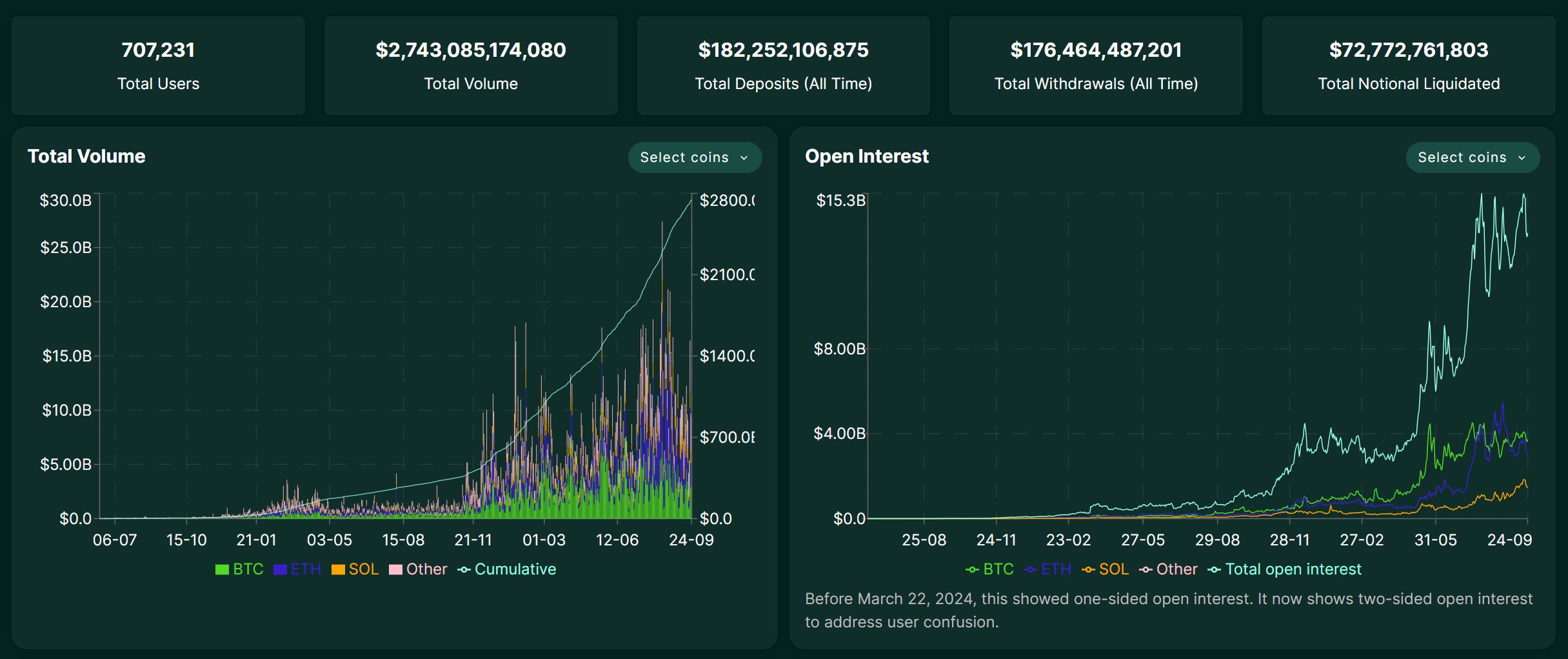Written by: imToken
“Derivatives are the holy grail of DeFi.” As early as 2020, the market had already reached a consensus that on-chain perp protocols are the ticket to the second half of DeFi.
But in reality, over the past five years, whether due to performance or cost constraints, perp DEXs have always faced a tough trade-off between “performance” and “decentralization.” The AMM model represented by GMX achieved permissionless trading, but in terms of trading speed, slippage, and depth, it was hard to compete with CEXs.
It wasn’t until the emergence of Hyperliquid, with its unique on-chain order book architecture, that a CEX-like smooth experience was achieved on a fully self-custodial blockchain. The recently passed HIP-3 proposal has further broken down the walls between Crypto and TradFi, opening up infinite possibilities for trading more assets on-chain.
This article will take you deep into the operational mechanism and revenue sources of Hyperliquid, objectively analyze its potential risks, and discuss the revolutionary variables it brings to the DeFi derivatives sector.
The Cycle of the perp DEX Track
Leverage is the core primitive of finance. In mature financial markets, derivatives trading far surpasses spot trading in terms of liquidity, capital volume, and trading scale. After all, through margin and leverage mechanisms, limited funds can move larger market volumes, meeting diverse needs such as hedging, speculation, and yield management.
The Crypto world has also validated this rule, at least in the CEX sector. As early as 2020, derivatives trading represented by contract futures began to replace spot trading on CEXs, gradually becoming the market leader.
According to Coinglass data, in the past 24 hours, the daily trading volume of leading CEX contract futures has reached tens of billions of dollars, with Binance surpassing $130 billions.

Source: Coinglass
In contrast, on-chain perp DEXs have been on a long five-year journey. During this period, dYdX explored a more centralized experience through on-chain order books but faced challenges balancing performance and decentralization. The AMM model represented by GMX achieved permissionless trading, but still lagged far behind CEXs in trading speed, slippage, and depth.
In fact, the sudden collapse of FTX in early November 2022 temporarily stimulated a surge in trading volume and new users for on-chain derivatives protocols like GMX and dYdX. However, due to the overall trading experience—market environment, on-chain trading performance, trading depth, and variety—the entire sector quickly fell back into silence.
To be fair, once users realize that trading on-chain carries the same liquidation risks but cannot offer CEX-level liquidity and experience, their willingness to migrate naturally drops to zero.
So the key issue is not “whether there is demand for on-chain derivatives,” but rather the persistent lack of a product form that both provides irreplaceable value over CEXs and solves the performance bottleneck.
The market gap is very clear: DeFi needs a perp DEX protocol that can truly deliver a CEX-level experience.
It is precisely in this context that Hyperliquid has brought new variables to the entire sector. What is less known is that although Hyperliquid only became widely recognized this year and entered the view of many users, it was actually launched as early as 2023 and has been continuously iterating and accumulating over the past two years.
Is Hyperliquid the Ultimate Form of an “On-Chain CEX”?
Faced with the long-standing “performance vs. decentralization” dilemma in the perp DEX sector, Hyperliquid’s goal is straightforward—to directly replicate the smooth experience of a CEX on-chain.
To achieve this, it chose an aggressive path: not relying on the performance constraints of existing public chains, but instead building a dedicated L1 application chain based on the Arbitrum Orbit tech stack, and running a fully on-chain order book and matching engine on top of it.
This means that from order placement, matching, to settlement, all trading steps occur transparently on-chain, while still achieving millisecond-level processing speed. Architecturally, Hyperliquid is more like a “fully on-chain version” of dYdX; it no longer relies on any off-chain matching, aiming directly at the ultimate form of an “on-chain CEX.”
The effect of this aggressive approach is immediate.
Since the beginning of this year, Hyperliquid’s daily trading volume has been rising, once reaching $20 billions. As of September 25, 2025, the cumulative total trading volume has exceeded $2.7 trillions, and its revenue scale even surpasses most second-tier CEXs. This fully demonstrates that the demand for on-chain derivatives is not lacking, but rather the product form truly suited to DeFi characteristics is missing.

Source: Hyperliquid
Of course, such strong growth has quickly brought ecological attraction. Not long ago, the bidding war for USDH issuance rights initiated by HyperLiquid attracted heavyweight players like Circle, Paxos, and Frax Finance to openly compete (see also: “From the Popularity of HyperLiquid’s USDH: Where Is the Fulcrum of DeFi Stablecoins?”), which is the best example.
However, simply replicating the CEX experience is not Hyperliquid’s endgame. The recently passed HIP-3 proposal introduces a permissionless, developer-deployed perpetual contract market into the core infrastructure. Previously, only the core team could list trading pairs, but now any user who stakes 1 million HYPE can directly deploy their own market on-chain.
In short, HIP-3 allows for the permissionless creation and listing of derivative markets for any asset on Hyperliquid. This completely breaks the previous limitation that Perp DEXs could only trade mainstream cryptocurrencies. Under the HIP-3 framework, in the future we may see on Hyperliquid:
-
Stock markets: Trading top global financial assets such as Tesla (TSLA), Apple (AAPL), etc.;
-
Commodities and Forex: Trading traditional financial products such as gold (XAU), silver (XAG), or EUR/USD;
-
Prediction markets: Betting on various events, such as “Will the Fed cut rates next time?” or “The floor price of a certain blue-chip NFT,” etc.;
This will undoubtedly greatly expand Hyperliquid’s asset classes and potential user base, blurring the boundaries between DeFi and TradFi. In other words, it allows any user worldwide to access core assets and financial instruments of the traditional world in a decentralized, permissionless way.
What Is the Other Side of the Coin?
However, while Hyperliquid’s high performance and innovative model are exciting, there are also significant risks that cannot be ignored, especially since it has not yet undergone a major crisis “stress test.”
The cross-chain bridge issue comes first and foremost, and is the most discussed topic in the community. Hyperliquid connects to the mainnet via a cross-chain bridge controlled by a 3/4 multisig, which constitutes a centralized trust node. If these signers encounter problems due to accidents (such as lost private keys) or malice (such as collusion), the security of all users’ assets in the cross-chain bridge will be directly threatened.
Secondly, there are treasury strategy risks, because the HLP vault’s returns are not guaranteed. If the market maker’s strategy incurs losses under certain market conditions, the principal deposited in the vault will also decrease. While users enjoy high yield expectations, they must also bear the risk of strategy failure.
As an on-chain protocol, Hyperliquid also faces regular DeFi risks such as smart contract vulnerabilities, oracle price feed errors, and user liquidations in leveraged trading. In fact, in recent months, the platform has experienced several large-scale liquidation events due to malicious price manipulation of some small-cap tokens, exposing its need for improvement in risk control and market supervision.
Moreover, objectively speaking, there is another issue that many have not considered: as a rapidly growing platform, Hyperliquid has yet to undergo a major compliance review or severe security incident. During a platform’s rapid expansion phase, risks are often masked by the halo of high growth.
Overall, the story of perp DEXs is far from over.
Hyperliquid is just the beginning. Its rapid rise not only proves the real demand for on-chain derivatives, but also demonstrates the feasibility of breaking performance bottlenecks through architectural innovation. HIP-3 further expands the imagination to stocks, gold, forex, and even prediction markets, truly blurring the boundary between DeFi and TradFi for the first time.
Although high returns and high risks always go hand in hand, from a macro perspective, the appeal of the DeFi derivatives sector will not fade due to the risks of a single project. In the future, it is possible that new projects will emerge to take the lead from Hyperliquid/Aster as the new flagship of on-chain derivatives. Therefore, as long as we believe in the charm and imagination of the DeFi ecosystem and the derivatives sector, we should give enough attention to such seed players.
Perhaps, looking back a few years from now, this will be a brand new historical opportunity.
